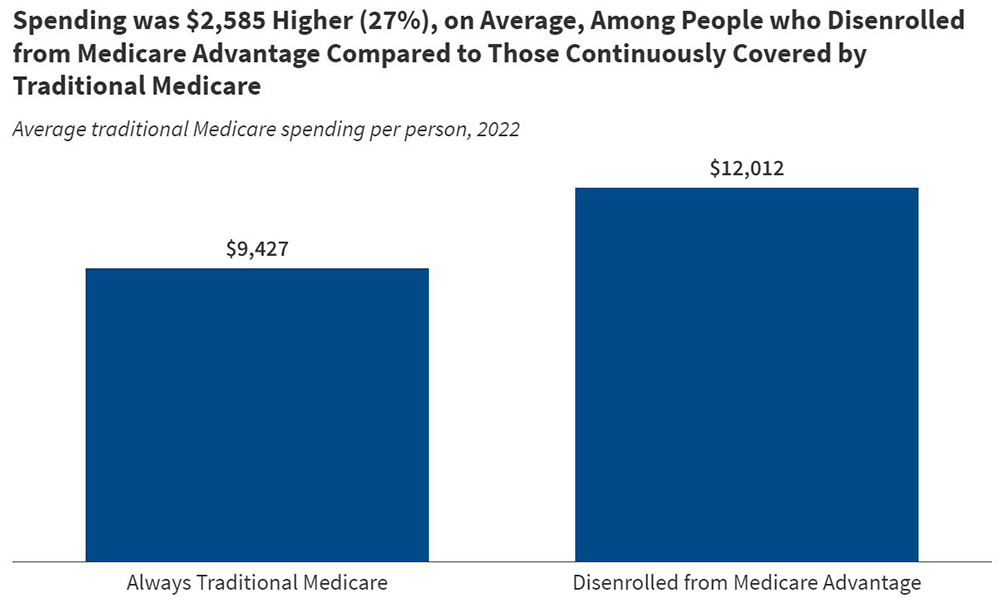New KFF analysis examines spending for traditional Medicare, MA
By HME News Staff
Updated 9:53 AM CST, Mon December 9, 2024

WASHINGTON – Medicare spent 27% more, on average, for people who were covered by traditional Medicare after disenrolling from Medicare Advantage than for people who were continuously covered by traditional Medicare, after adjusting for differences in health status and other characteristics, according to a new analysis by the Kaiser Family Foundation.
This is a difference of $2,585 in Medicare spending per person, on average, between the two groups in 2022.
Other highlights from the analysis:
- Differences in Medicare spending between people who disenrolled from Medicare Advantage and beneficiaries continuously in traditional Medicare varied by health condition, ranging from 15% for people with pneumonia to 34% for people with diabetes. For example, among people with certain cancers, Medicare spending was 28% ($4,907) higher, on average, among those who disenrolled from Medicare Advantage than among people continuously covered by traditional Medicare.
- Differences in Medicare spending between people who disenrolled from Medicare Advantage and those continuously in traditional Medicare increased with age for Medicare beneficiaries ages 65 and over. For example, among people ages 85 and over the difference was 46% ($7,113) compared to 25% among people ages 65 to 69 ($1,843).
- Differences in Medicare spending between people who disenrolled from Medicare Advantage and beneficiaries continuously in traditional Medicare were larger among Black (55%, $5,203) and Hispanic (54%, $4,434) beneficiaries than White beneficiaries (25%, $2,464).
- People dually-eligible for Medicare and full Medicaid benefits who disenrolled from Medicare Advantage had spending that was 61% ($9,435) higher than their counterparts who were continuously in traditional Medicare, while the difference in spending for Medicare beneficiaries who do not receive Medicaid was 20% ($1,684).
- Skilled nursing facility spending accounted for the largest share of the difference in average Medicare spending per person between people who disenrolled from Medicare Advantage and those continuously in traditional Medicare (34%), followed by outpatient hospital spending (23%), and inpatient hospital spending (20%), with some variation by chronic conditions and other beneficiary characteristics.
KFF says the analysis raises several questions, including why are some Medicare Advantage enrollees choosing to disenroll from Medicare Advantage rather than get the medical care they need from their plan, and why are they receiving more medical care in the year following disenrollment and similar people who have been continuously covered by traditional Medicare?
Comments